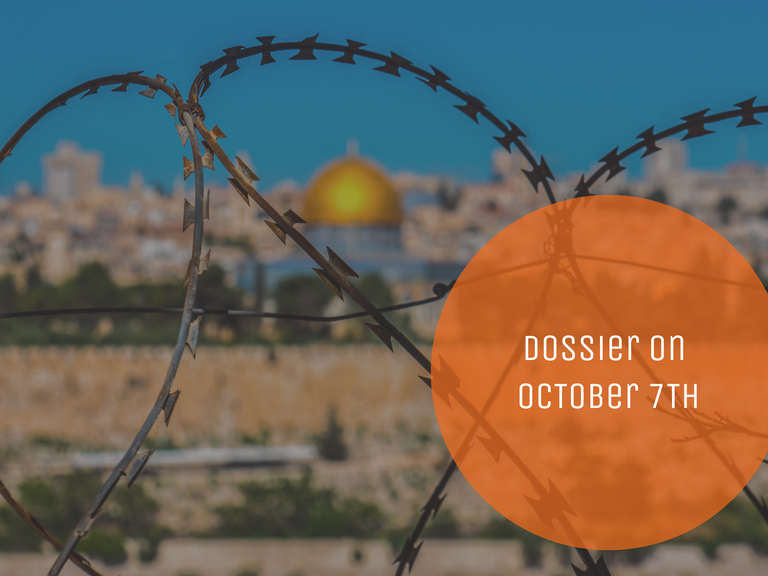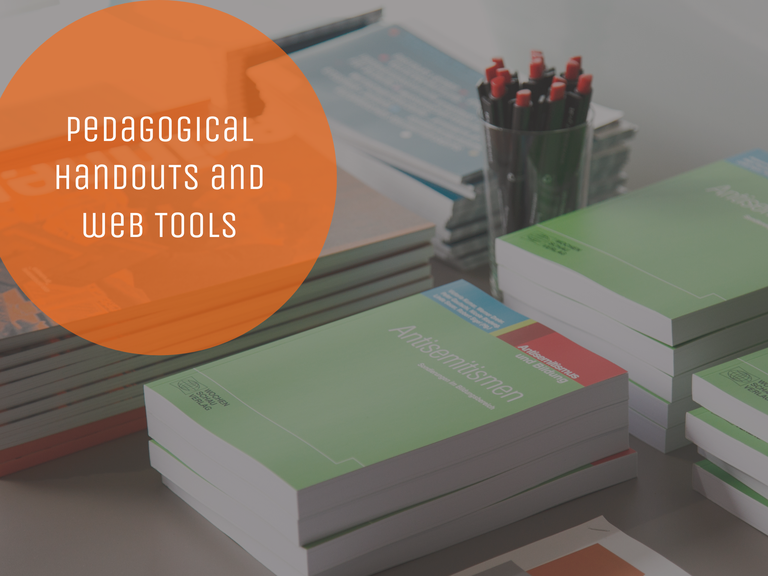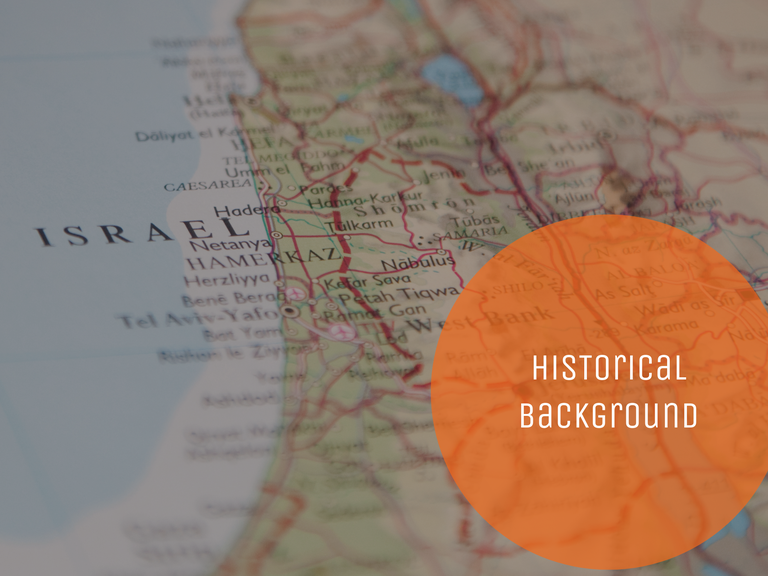October 7th and the war in the Middle East
For 25 years, the OeAD programme ERINNERN:AT has been offering two-weeks seminar trips on the subject of the Holocaust, National Socialism and cultures of remembrance in Israel on behalf of the Ministry of Education. The trips form part of two university courses at the teacher training colleges in Upper Austria and Salzburg. The seminar trips are organised with cooperation partners in Israel, the “International School for Holocaust Studies” at the Yad Vashem memorial and the “Center for Humanistic Education” at the Lohamei HaGetaot memorial. Participants also learn about the country of Israel – its history, the diversity of its society and the conflicts that continue to dominate the region.
Following the terrorist attack by Hamas on civilians in southern Israel, it soon became clear that educational responses to the consequences of the massacre and the ongoing war in the Middle East were also needed in local classrooms. Not least based on the experiences of the seminar trips, ERINNERN:AT has developed learning materials and pedagogical recommendations for dealing with the conflict in the Middle East and Israel-related anti-Semitism in the classroom in recent years: https://www.erinnern.at/lernmaterialien/wie-auf-antisemitismus-in-der-schule-reagieren-themenpakete-antisemitismus/antisemitismus-im-kontext-von-israel-und-dem-nahost-konflikt
This support for teachers is now being expanded to include a web dossier. At the core of the programmes are questions and answers (Q&A) which offer perspectives on the situation in the Middle East and Europe, as well as answers to questions frequently asked in classrooms.
German version of the dossier
Questions and Answers (Q&A)
For this Q&A, experts were interviewed who work together with ERINNERN:AT as part of the university courses and Israel seminar trips – as cooperation partners in Israel, as lecturers on the courses and as tour guides. It concerns a selection of voices that have their say – including voices from Israel. The questions and answers are not exhaustive, and reflect the views of the authors. The gender-sensitive spelling of the authors has been adopted in the respective texts.
1. What happened on the October 7th? How does October 7th differ from previous events in the Middle East conflict?
By Uriel Kashi, historian, city guide and tour guide for the Israel seminar tours, Israel
In an unprecedented escalation of violence, the terrorist organisation Hamas launched the so-called “Operation Al-Aqsa Flood” on October 7th, 2023. The attack began with wide-scale and sustained rocket fire into the Israeli heartland, with around 3,000 rockets being fired at Israel in the first four hours alone. At the same time, Hamas militants attacked the security barriers on the Gaza Strip using explosives, drones and bulldozers. Around 2,000 terrorists managed to infiltrate up to 24 kilometres deep into the Israeli heartland. Some of the terrorists focussed on taking over and destroying Israeli military and police facilities. Hamas’ primary focus, however, was on attacks inside Israeli cities and kibbutzim, where they murdered 1,200 people – including entire families with small children, within a few hours. The massacre at the Nova music festival, in which around 364 mostly very young party guests were killed, caused tremendous outrage. This is not the only place where Hamas committed mass, sexualised violence and numerous rapes against Jewish women. A third goal of the Hamas terrorists was to kidnap Israelis in the Gaza Strip. The 253 people originally abducted in the Gaza Strip included numerous children, young people and senior citizens. Since the Arab-Israeli war of 1948, Israel has not fought street battles against its opponents on its own territory. The pogrom-like terrorist attack by Hamas marks an unprecedented tragedy in which more Jews were brutally murdered in one day than ever before after the Holocaust.
2. Who (and what) is Hamas?
3. What is Israel’s situation in the Middle East, and what are the current threats?
4. How did Israel react to the Hamas attacks, and how do others assess its actions?
By Uriel Kashi, historian, city guide and tour guide for the Israel seminar tours, Israel
On 8 October, the Israeli security cabinet officially declared a state of war. The army mobilised over 300,000 reservists – the largest mobilisation since the state’s founding. In order to protect the civilian population, 29 Israeli villages near the border with the Gaza Strip were evacuated. As the Iranian-financed terrorist organisation Hezbollah intervened in the conflict from Lebanon with artillery and drone attacks, numerous villages on Israel’s northern border were also evacuated. On October 7th, the Israeli Defence Forces (IDF) launched Operation Iron Swords, a ground offensive in the Gaza Strip with the aim of neutralising Hamas’ military capabilities and freeing the hostages still being held.
International reactions to Israel’s military action are divided. On the one hand, a large part of the Western world supports Israel’s right to self-defence; on the other hand, there is clear criticism of the Israeli airstrikes in the Gaza Strip, which have also killed numerous Palestinian civilians. After Israel, Hamas is guilty of abusing the Palestinian civilian population through the use of human shields, in order to isolate Israel internationally through high civilian casualty figures.
At a diplomatic level, the UN Security Council passed resolutions in favour of humanitarian aid for the Palestinians, a limited ceasefire and the release of all hostages kidnapped by Hamas. South Africa’s complaint to the International Court of Justice against Israel over the accusation of genocide – which was largely supported by countries in the Arab world and Africa, but clearly rejected by Western nations – is noteworthy.
5. What is the relationship between October 7th and experiences of violence by Jews throughout history?
By Noa Mkayton, Director of the Overseas Education and Training Department at the International School for Holocaust Studies, Yad Vashem, Israel
The Hamas attack on southern Israel was unprecedented in the history of the State of Israel. The attempt to categorise this drastic excess of violence in Israel has often led to parallels being drawn with the “Shoah” or Holocaust. On an emotional level, such analogies are understandable, especially when they are linked to the personal experience of the victims directly affected. Stories of children who had to hide for hours to avoid being discovered by the murderers, and of entire families who were executed, reactivate latent traumas from the time of the Shoah.
Nevertheless, as Yad Vashem’s chairman, Dani Dayan, clearly stated: the events of October 7th in Israel should not be equated with the Shoah. Dayan points out that, during the years of persecution by Nazi Germany and its allies, the Jewish communities in Europe and North Africa completely lacked armed defence and any form of political self-determination. They were entirely at the mercy of the local population’s favour (or disfavour), who in most cases (though not always) advocated, actively supported or were at least indifferent to the persecution and murder of the Jewish minority. And even if the response of the Israeli security apparatus was, in part, tragically too late and ultimately ineffective, the mere existence of a powerful Israeli army and an Israeli civil society that is fully empathetic and willing to help marks a clear difference to the experiences of violence that the Jewish people have had to endure over their millennia of diaspora.
6. What effects does October 7th have on Jews in Austria and Europe? What attempts are there to explain the massive increase in anti-Semitism?
By Deborah Hartmann, Director of the “House of the Wannsee Conference Memorial and Educational Centre”
The massacre perpetrated by Hamas and its supporters on October 7th – and the reactions to it – have left many Jews around the world feeling unsettled and traumatised. On the one hand, Jews are asking themselves whether the state of Israel can still be a safe home and refuge from anti-Semitism. On the other hand, many Jews lacked any understanding of how they should deal with the lack of empathy they were met with by close friends and colleagues.
If there was ever a real sense of security, of trust for Jews in Germany and Austria, then it has been deeply shaken after October 7th; just as shaken as the fundamental sense of trust of the Israelis, which Hamas deliberately wanted to destroy with its attack. The fact that this also happened in the heart of Europe – and that the Jewish post-war experience is now divided into a time before (and a time after) October 7th – is also due to society’s failure, to show real solidarity with Jews, beyond good words and assurances, be it just with small gestures of understanding and compassion. It is, therefore, unsurprising that everyday actions are now being scrutinised once more, and life-restricting measures are being taken to protect oneself and one’s own family. Are we really going to this theatre play? Should I enter my name when ordering? Do I send my child to school?
Many Jewish students do not feel comfortable at their universities. Israeli scientists are considering whether to travel to international conferences. It’s not always just about the fear of personal attacks. In most cases, it is simply a disturbing unity in the perception of Israel that leads to a feeling of being excluded and not being understood.
The war in Gaza that followed October 7th and the undeniable suffering of the Palestinian civilian population, has become a vehicle to justify, trivialise and ultimately articulate seemingly legitimate anti-Semitism without restraint.
7. What are the views on the consequences of October 7th within Jewish-Israeli society?
8. What are the views on the consequences of October 7th within Arab-Israeli society?
9. What impact does October 7th and the ensuing war have on Jewish-Arab dialogue?
10. Can the situation in Israel/Palestine be compared with other conflicts?
By Helga Embacher, University of Salzburg, Institute for Contemporary History, speaker at the preparatory weekends for the Israel seminar trips
With Israel’s occupation policy after the “Six-Day War” of 1967, and especially with the failure of the Oslo Peace Accord in the 1990s, left-wing movements and human rights organisations, in particular, (e.g. Amnesty International, Human Rights Watch or Israeli organisation „B'Tselem“) compared Israel to an apartheid system. Without explicitly mentioning it, it is usually associated with the South African apartheid state, but without naming parallels and differences.
In the occupied West Bank (and in annexed East Jerusalem), there are, in fact, two different legal systems for Israeli citizens and stateless Palestinians due to the occupation. For the Palestinians, this means human rights violations – such as severely restricted freedom of movement, different access to water and roads and the expropriation of Palestinian land. Despite existing overlaps with definitions of apartheid under international law, it is not possible to maintain an equation with the South African apartheid state. There can be no talk of institutionalised racism in Israel. The current, untenable situation of the Palestinians, on the other hand, is the result of a complex history of claims over land and the failed peace process, in which Palestinian terrorism is one of many factors. However, statements such as those made by current Security Minister, Itamar Ben Gvir, according to which his family – because they are Jews – would be entitled to more rights in the West Bank than their Arab neighbours, are proving to be extremely dangerous.
11. What are Israel’s ideas for a political solution to the current armed conflict, and why are they failing?
By Noam Yatsiv, tour guide for the Israel seminar tours specialising in geopolitical and historical tours, teacher and freelance writer, Israel
Following the terrorist attack on October 7th, the Israeli government declared two seemingly contradictory goals: the final overthrow of the Hamas regime and the simultaneous release of all hostages. Despite extensive air strikes and a sustained ground offensive by the IDF (“Israel Defence Forces”), neither of these targets was able to be reached even after more than six months. One partial success was the release of 112 hostages in exchange for 240 Palestinian prisoners as part of an agreement brokered by Qatar in November 2023.
Benjamin Netanyahu’s current political priority is to maintain his far-right coalition at all costs. However, the associated price is high, as it isolates Israel in many parts of the world and blocks serious debates on pragmatic initiatives and proposals for the “day after the war”. The “peace process” has barely existed for 15 years, and a two-state solution has receded into the distant future. Nevertheless, the most obvious option would be to use the “Palestinian Authority (PA)” – based in the West Bank – for the purpose of self-administration in Gaza. However, the PA is not an option for Israel’s government. Just as unpopular for most Israelis, however, is Israel’s direct control over Gaza. In view of the shock and fear triggered by the terrorist attack and the subsequent war, the Israeli public remains rather passive when it comes to finding solutions.
At present, it remains to be seen as to how the tense situation on the border in the north will develop, and whether this too will lead to a regional war. Despite everything, perhaps in the long term, it is precisely this feeling of hopelessness that can revive support for a two-state solution.
12. How is the current conflict affecting Austria’s schools, and how is it being discussed?
By Gabriel Dreier, accompanying team of the Israel seminar trips and secondary school teacher Vienna
While anti-Semitism – especially in its form relating to Israel – has long been present in Austria’s schools, a lot has changed since October 7th. The “war of images” in Gaza is incredibly present in social media, from which the majority of students get their information and news. More countries than ever before are criticising Israel for the military operation in Gaza, and the line between anti-Semitism and permissible criticism of the Israeli government, its actions in Gaza and its relationship with the Palestinians in general, is becoming increasingly difficult to discern.
Our pupils are now caught in the middle of this confusion that entails both information and disinformation. Some have family roots in regions where anti-Semitism – particularly in relation to Israel – has a long tradition and is part of everyday propaganda. While the Jewish victims of the Hamas attack are barely present, images of suffering or dead children, women and men from Gaza are now being flushed into mobile phones on TikTok every single day. This makes it increasingly difficult for pupils to recognise and categorise the conflict’s complexity. They identify with the victims and mix their suffering and helplessness with their own experiences of flight and marginalisation. It should, therefore, come as no surprise that this personal outrage is also reflected in their statements. A rather one-sided view ultimately dominates, and that is precisely why it is important to talk to them on an equal footing, with understanding and empathy, to de-construct and contextualise content and information from social media, and to show them that the conflict does not follow a good/bad dichotomy. We teaching personnel should treat pupils with the openness, curiosity and tolerance that we expect from them when dealing with other religions, cultures and world views.
By Julia Mayr, Network Coordinator ERINNERN:AT Upper Austria and former course participant
During a trip to Israel in the summer of 2022, I was able to meet Eyal Naveh, one of the authors of the book “Side by Side – Parallel Histories of Israel-Palestine”. “Side by Side” topicalises individual periods in the history of the Middle East – such as the War of Independence and the “Nakba” (expulsion and flight of the Arab population) – from a multi-perspective viewpoint. This multi-perspective approach is reflected in the title and inside the book, which is divided into three columns. The left column describes the Israeli perspective, the right column the Palestinian perspective and the centre column consists of blank lines inviting readers to reflect on their own perspective. This multi-perspective and participatory approach does justice to the fact that, in Israeli-Palestinian history, there is often still no narrative on which all parties have agreed, meaning that it is important to put several points of view in writing, in order to do justice to as many people as possible and to reach a diverse audience – such as that of a classroom.
Following the brutal terrorist attack by Hamas on civilians, there have been events that are incompatible with the values of our society and demand a clear position. This includes condemning terror and anti-Semitism and recognising that those affected deserve protection. However, it is important to name the terror of October 7th and its perpetrators – namely Hamas – and not to equate them with all Palestinians.
13. How can the conflict be dealt with at school?
By Adelheid Schreilechner, head of the course “Holocaust. Cultures of Remembrance. History Teaching” at the Salzburg University of Education, in the context of which Israel seminar trips are organised
We live in a time (and in a society) in which images and news come at us unfiltered and unrestricted by the constraints of time. On social media channels, attitudes and behaviour are constantly confirmed and reinforced according to the prevailing algorithm. One-sidedness and “emotionalisation” are the result.
In lessons, one should work in three steps:
1. Collecting, 2. Objectifying, 3. Drawing conclusions.
1. Collecting
A school can (and must) be a neutral place where people can express what they have experienced and heard without being immediately corrected or judged. This affords young people an outlet for what they are exposed to.
2. Objectifying
Teachers look at the conflict with the pupils on a meta-level, talking about facts instead of dwelling on emotions or reinforcing them. The discussion surrounding the conflict could, for example, be introduced as follows: “We are dealing with a conflict that goes far back into history. So let’s try to clarify what it’s all about and how it got this far.”
3. Drawing conclusions
At the end of the substantive work, there should be conclusions drawn, i.e. findings. Nobody has to (or should) take sides. Rather, we learned something about Israel and Palestine, about Jews, about Palestinians and about conflicts in general.
The more varied the learning outcomes, the more differentiated and successful the lessons were. And improvements are always possible!
By Stephan Scharinger, former course participant and teacher training college in Tyrol
Our students come to class with previous experiences and judgements that have been shaped by their families and the media, for example. The school’s task must be to convey facts and circumstances, as well as to provide a space for the exchange of opinions, in order to be able to reflect on one’s own judgements and adapt these if necessary.
An initial step can focus on media research: the students follow the media available to them for a week and note down headlines that concern them. In class, the media reports are then enriched with historical and political knowledge. Depending on the age of the pupils, terms such as “Hamas”, “Gaza Strip”, “hostages”, “Palestinians” or “anti-Semitism” need to be clarified, in order to create a common basis for discussion. Finally, the students formulate written questions about the Middle East war on post-its or in a digital forum. The questions remain visible to everyone during the lesson.
In order to understand the Middle East war, it is important to categorise it from a multitude of different perspectives. The conflict is explained with the help of age-appropriate and suitable information materials (texts, explanatory videos). Simultaneously, media didactic considerations on (dis)reputable media and fake news are necessary. Possible guiding questions for the media analysis could be: who are the authors? Are figures/data/facts provided? Are sources or experts indicated? Is the video’s aim to provide factual information?
Finally, the students’ open questions are answered. Fact-based discussion means clearly stating the facts and distinguishing between facts, opinions and emotions. It is hugely important to remain in dialogue with the students as equals, and not to relinquish the relationship level, even if different points of view clash.
Further pedagogical handouts and web tools
A more comprehensive web collection on “Antisemitism in the context of Israel and the conflict in the Middle East” with an annotated selection of learning materials, handouts and web tools, as well as texts, can be found here: link. We present a small selection that is particularly suitable for the current challenges below: pedagogical handouts and web tools
Background text
In order to categorise the questions and answers more effectively, we have provided this brief overview of the history of the conflict. This text was first published in polis aktuell 5/2022 “Nahost – Geschichte. Konflikt. Wahrnehmungen”, a joint publication by “zentrum polis” and ERINNERN:AT. The text was updated by the author Steffen Hagemann for this dossier: link






